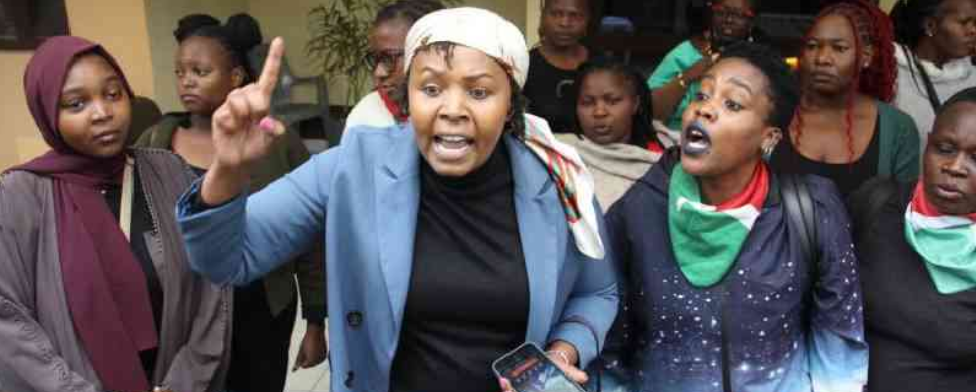Azimio, police should handle next demos differently to avert chaos
- Irungu Houghton

- Mar 25, 2023
- 3 min read

Both Azimio la Umoja and the National Police Service lost control of Monday’s protests against the cost of living, the last general election and mis-governance. Blame games aside, and two days away from the second episode in the new season of maandamanos, what could protestors and police do differently to avoid a violent sequel?
Cat and mouse chases, arrests, gunshots, and tear-gas, left one university student dead, ten civilians and police-officers injured, 238 people arrested and property worth millions looted or destroyed across five counties. While most have concentrated on the day itself, critical mistakes were made days before.
Mixed Interior Ministry and the Police messages whether the protest would be permitted, mass arrests of Kenya University Students Organisation leaders and anxiety among Azimio leaders of pre-emptive arrests set the scene for mayhem. Azimio’s choice of venue denied, demonstration routes blocked, and the leadership arrested, made confusion and confrontation inevitable.
Having organised several street actions, I know first-hand, protests are complex and dynamic. To remain peaceful, they need goodwill from police commanders, logistical agreements, firm civic marshalling, and a clear policy asks. Two hours of marching over 5 kilometres and the petition received by a Government officer, everyone – protestor, policymaker and police-officer - goes home safely.
It is bizarre that authorities still grapple with public assemblies. It has been a century since national heroine Mary Nyanjiru faced down racist settlers at the Norfolk Hotel, thirteen years since the right to peaceful assembly was constitutionally enshrined and a couple of years since the KNCHR, IPOA and Article 19 outlined practical guidelines for non-violent protests.
The KNCHR guidelines are reinforced by the United Nations Code of Conduct (1979) and the Use of Less-Lethal Weapons (2020) that regulate police use of force. Applying them, most observers would concur Monday’s protest management fell short of the principles of legality, precaution, necessity, proportionality, non-discrimination, and accountability.
Senior police officers seemed unclear whether to enforce Article 37 by facilitating protection and support for Assembly organisers or wait for orders from above. The indiscriminate use of water cannon tanks and tear-gas, rubber, and live bullets by both uniformed and non-uniformed officers accelerated the panic and stampeding of large crowds.
With the Azimio leadership arrested or cordoned off and the “no surprises” rule of successful protest organising abandoned, it was unclear who was communicating with who. Comprehensive de-escalation strategies and kwaground leadership of 2008 post-election violence legend Police Officer Joseph Musyoka Nthenge seemed absent. Protestors, civilians, and looters blurred. All experienced the blunt force trauma of police batons.
Using the archaic Public Order Act to throttle the right to assembly or attempting to gag the media through the Communications Authority of Kenya is like trying to surf the internet with a kabambe. The Police Inspector General must now initiate conversation between Azimio assembly organisers. and his commanding officers.
His office can also invite KNCHR, IPOA, human rights and fact-checking organisations to jointly plan for independent human rights monitoring and disinformation. Evidence that even the nation's primary investigative arm, Directorate of Criminal Investigation are not above communicating false information and fake photos must concern us. While the Police Service waits for the political class to find a political solution, it must remain non-political, uphold the constitution, and facilitate the right to peacefully assemble.
It is worth reminding the Executive that public demonstrations and economic boycotts are but two tactics in Gene Sharp’s 198 methods of non-violent civil disobedience. If, as Martin Luther King Jnr’s once described protests as the riots of the unheard, shouldn’t State House directly or indirectly now initiate dialogue with Azimio leadership?
Now in the season of discontent and disaffection, the issues ailing us need to be carefully unbundled and separately addressed. Public perception that the young national administration is wasteful, appointing economic criminals to state offices and actively capturing the parliamentary opposition, religious organisations, the media, and independent offices needs to be reversed. The nation must be allowed to breathe or Kenya Kwanza risks everything.
We owe it to fallen Maseno University student William Mayange, his family, and comrades, to manage the next episode of the maandamano season differently.
This opinion also published in the Saturday Standard on 25 March 2023 #StandardSettingKE




Comments